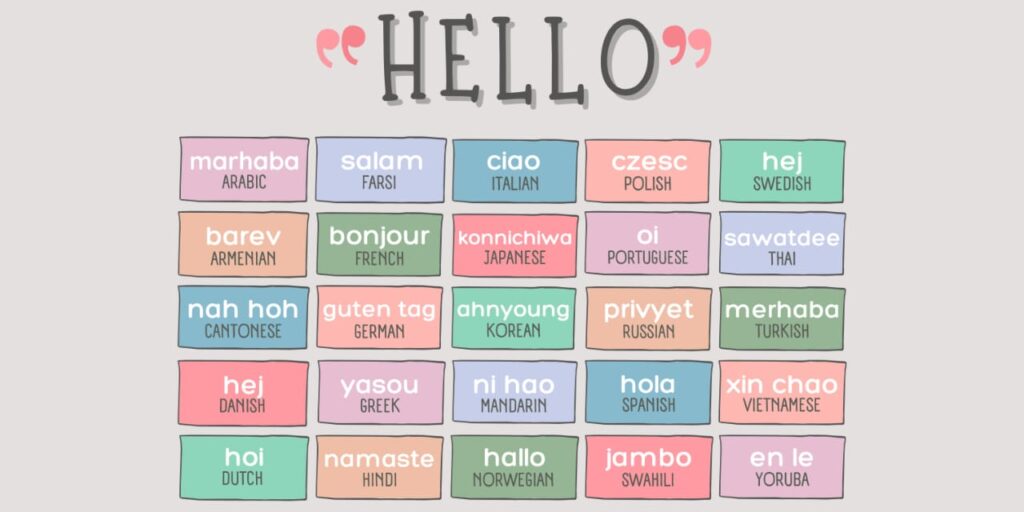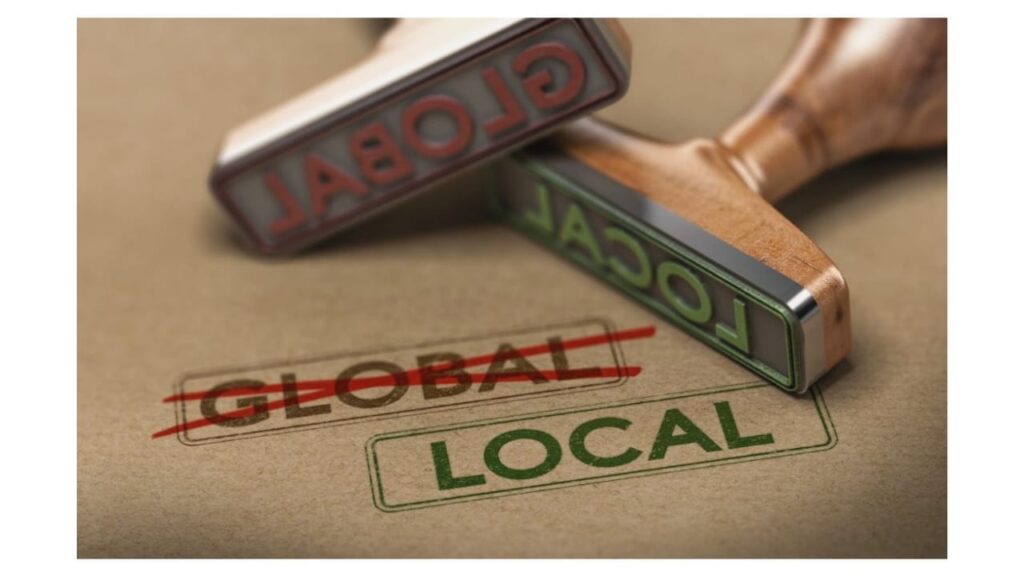
What is language localization?
Why do you need it?
Well, the dull performance of the Ford Probe in the German market tells us the importance of understanding cultural sensitivity where the word probe translates exactly in German as “test” and the German people were not interested in buying test cars.
On the contrary Apple a universal electronic brand wisely ran their ad campaign that suited the US market where a cool laid-back man represented Mac and a nerdy-looking guy represented PC. However, this is regarded as cheap in Japanese culture and they twisted their ad campaign according to their demography.
A clear understanding of specific cultural nuances and specific norms followed in that particular demography assists in conveying your brand message correctly and evolve as a global brand.
The above situation depicts the need for proper localization to translate your ideas to the rest of the world. How can you do that? What is the procedure to localize your brand specific to that country?
No worries! This article would give you a clear picture of language localization, its meaning and the process you need to carry on to localize your brand to globalize.
What is language localization?

Language localization the term itself defines itself ie tuning your brand to fit and sell for locals of that specific region. To make it more conceptual we can say language localization is a comprehensive study of the target market to adapt your product or services specifically to them.
Being specifically customized for your product or services to that market your brand performance would improve to a greater extent and in turn increase the brand credibility. Hence, your sales performance would increase to a wider extent.
What are translation and localization?

It’s very difficult to draw the line between translation and localization but we can generally say localization is a non-textual component of a product or service that needs to be conveyed to the target market.
Whereas translation is the textual component that needs to be conveyed in the particular language.
Overall both need to be very appropriate and specific to that particular targetted market to create credibility.
Why localization is important in business strategy?
The competitive business world demands innovations and quickness in the industry. It is all about how you narrate yourself to cover the maximum of the market globally. This requires great collaboration and a solid localization strategy.
Localization being a distinctive market approach to address the purchasing habits, customer behaviors, and cultural differences can help your brand reach new foreign markets faster. It also helps in communicating better about your brand to your customers for their better experience.
The topmost benefits of localization include
Reach new markets
Your brand solutions can be reached by a larger audience across borders with no hassle.
Global presence stability
Even if you have just started a small business it can grow big as it paves the way to a new market. This, in turn, boosts sales, more leads, and attracts more investment to your business.
Better brand image
With adaptation to the local culture the rapport between prospective customers would be better and establish a consistent brand image. It creates a sense of familiarity with your brand.
Successful ad campaigns
The familiarity with cultural instincts would result in better-targeted words, context, and SEO norms. Thus, increasing the conversion rates with better ROI.
How localization work?
How can you get started with localization? It’s indeed a bit tricky as you need to think internationally. It’s with learning in each stage you can be perfect with that. The more you flex the more you would learn. It would turn out as interesting and easy when you accept the criticism and work towards the betterment of your brand performance.
You may have to collaborate with multiple team members like the product information team, localization team, and linguists to give an output that would scale globally. This team would perform design checks, localization analysis, and provide feedback.
Here are the major steps that are involved in localization:
Framing a localization strategy:
- A localization strategy should be considered when you want to approach a specific market with a different language and culture that you are not familiar with. Making it sound generic and a common strategy for all markets would indeed make things difficult. The advice that we would give our clients as well is to frame a specific strategy for the particular demography that blends well with your business niche is mandatory.
Answer the following questions while framing a strategy
- What is your major strength that suits the market and that’s not there in others?
- What is the goal of this localization project?
- Who is your target audience and what are all the challenges they face?
- How you are going to manage this workflow?
If you figure out answers to all these queries you can have a clear picture of how this localization process would proceed.
Gather your skillful team:
Nothing is more important than reliable and skillful professionals for a stable workflow. Once your strategy is cleared in the above step you will have the list of required resources and you can decide who you want to hire and with whom you have to collaborate, etc.
Normally a localization team consists of
- Developers: They are the technological hearts of your project.
- Translators: To convey the brand message to the world
- Designers: A picture should speak a thousand words is a very meaningful statement. A design that blends well with your message would give a break to your readers and can convey the message in a way that hooks your audience.
- Marketers: They are the ones who are going to ace your brand with the correct marketing techniques that work well in that specific targetted market.
Localization tools:
The right tool to moderate your localization process carries its weight. Mostly translation management system is the tool that’s been utilized for this process will have to
- Gather all translatable content
- Quick communication for smooth workflow
- Speed up the translator’s job as it uses computer-assisted translation tools
- Fasten the content circulation via automation
- Saves your approved translation
Extract and manage content for localization:
In this step, you would mostly be segregating the contents that need to be communicated to the local market for translation You can automate this process and have a check manually once generated via the platform you use.
Content translation
First, provide a clear brief to your translator about the task they must carry out. Be very specific about the timeline and feedback systems. Depending on the business requirement assign the work to a freelancer or in-house translator with the required expertise
Quality check and revisions
Once the translations are done make sure to cross verify the grammar, syntax, style, and tone of the copy match your brand message. It is also very important to make sure that cultural appropriateness is also maintained. by proofreading and editing. Even pretty big brands like Electrolux have made awkward mistakes in localization. So giving time for this step makes a bigger difference.
Localized content publication:
Prepare the edited copy for publication as it was given originally. Make sure to not make any silly errors.
The launch
Finally! You reached this stage!
However, even a well-established workflow can happen to have unexpected bugs in any format.
All you need to do is to react swiftly and resolve or adjust quickly. Make sure to get these done after the launch
- product/ service testing
- Customer experience feedback
- Collect the reviews and ratings about your product and keep improvising based on their needs.
FAQ
-
How to do language localization?
Language localization is a 7-step process of framing strategy, gathering team, working on the requirement, translating, checking, and launching. It needs to be carried out very carefully to reach the right audience.
-
What is localization used for?
Localization is used to reach a new set of audiences in foreign markets by communicating in the language that they understand.
-
What is SEO localization?
Increasing the website traffic organically in the right target language is called SEO localization. It majorly assists marketers in increasing their leads in different demographics.
-
What is software localization?
The process of conforming software and digital user experience in a language other than the one it’s been designed. It needs to be carried out very specifically to make it sound natural to the end user.
-
What is website localization?
Process of converting your website multilingual where it’s much more than converting a simple translation of the text.
An effective localization strategy for the globalization of your business

Localization is a very broad terminology to choose from. A successful localization project can be achieved only by a skilled team who can handle the right tool.
No matter wherever you stand in your business expansion stage always consider
- Have a clear business expansion vision
- Hire the best professionals who can handle your requirements
- Ensure quality of work
- Avail the technology to automate the process you can.
If you want to start with a simple translation management system or come up with a bigger localization requirement with a wide range of documents that’s where ICOS Global can help you. Our process is pretty straightforward with clear communication. Talk to us now to get a free quote on your project!